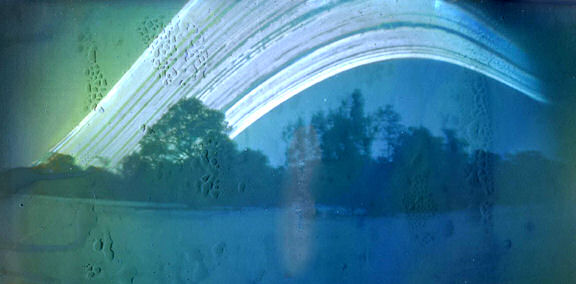|
The winter solstice marks the shortest day and longest night of the year. In the Northern Hemisphere, it occurs when the sun is directly over the Tropic of Capricorn, which is located at 23.5° south of the equator and runs through Australia, Chile, southern Brazil, and northern South Africa. This year, the Northern Hemisphere winter solstice will occur at 8:58 am MST on December 21, 2020. For a complete listing of the dates of the winter and summer solstice's and spring and fall equinox's, check out this site: https://www.weather.gov/media/ind/seasons.pdf A pinhole camera (no lens and a single small aperature) can be effectively used to document the change in elevation of the sun during the year. The image below is a solargraph made with a pinhole camera, in which the path of the sun as it crosses the sky is captured for an extended period. It was made in Tijeras, and depicts the period from the summer solstice (highest streaks) to the winter solstice (lowest streaks) in 2009. |
|
 |
|
|
Image courtesy of Becky Ramotowski
|
|
|
|
|
|
|
|
|
|
|
The Solstices, Equinoxes and Seasons
|
|
|
 |
|
|